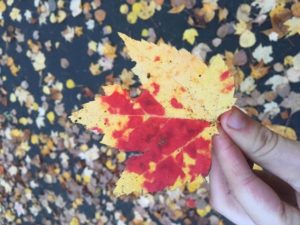By: Matthew Olson
November, 1st 2021
The Art of Composting
There are many factors to consider when creating a garden. How much sun will my perennials need? How large do these shrubs grow? Is this tree hardy enough to survive a Minnesota winter? These are all good things to consider. There is one factor that is often overlooked, the soil.
The soil in a garden plays a major role in the development of the plants. A moisture loving plant that is grown in dry soil will never grow to its full potential. The same rule applies for plants that prefer dry areas but are planted in moisture retaining soil. Many gardeners have soil that isn’t ideal for the plants they want to grow. Fortunately, there are ways to improve your soil.
The texture of your soil often determines how effectively it holds water and nutrients. The three types of particles found in soil is sand, silt, and clay. A soil with a sandy texture won’t hold much water or nutrients. Soil that contains large amounts of clay will hold more water and nutrients but may not drain properly. The ideal soil texture is loam, which has a mixture of all three particles, allowing optimal drainage and nutrient retention. The table below shows how the texture of soil is determined.

Photo courtesy of researchgate.net
There are many ways gardeners attempt to aid the growth of their plants. People will sometimes fertilize the plants in their landscape to increase growth. This benefits the plants in the short term, but doesn’t improve the soil. A more effective way to improve the health of your plants is to amend the soil with organic matter, such as compost.
Compost is a mixture of organic material that is allowed to decompose. The purpose of creating compost is to recycle organic material and use it to improve the soil. There are many items from your yard that can be used to create compost. Here’s a few examples:
| Kitchen scraps (No meat, dairy, or fish) | Non-noxious weeds |
| Grass Clippings | Manure |
| Dry Leaves | Coffee Grounds |
Fall is a great time of year to begin making compost, because we are surrounded by falling leaves- a perfect ingredient for compost. Leaves that are diseased should not be added to the compost pile.
Using compost in the garden has many benefits. It improves the soil structure allowing the optimal amount of air, water, and nutrients to be present and retained in the soil. Compost allows soil to hold more water and nutrients, but also improves drainage.
Creating your own compost is simple. The elements required to break down the compost include:
- Organic material
- Microorganisms
- Air
- Water
- Nitrogen
The microorganisms break down the organic material, which allows the compost to benefit your garden.
The location of your compost pile is important. It should be in an area that is secluded, but also close to your garden or kitchen. This will allow for easy access to the pile. You can purchase a composting bin from a local nursery or make your own. If you choose to make your own, there are several materials you can choose for the enclosure, such as wire fencing or bricks. The pile should be in a place with good drainage that doesn’t dry out quickly. The size of the pile will depend on the amount of space you have, but should be no less than 3 by 3 ft. The pile shouldn’t exceed 5 by 5 ft.
The compost should be created using layers. The first layer should be 6-8 inches of plant material, such as leaves. The second layer should be 1-2 inches thick and consist of soil or finished compost. To created nitrogen for the microbes to use, add 1-2 pints of a general fertilizer, such as 10-10-10. Continue repeating these layers until the pile is 3-5 ft tall.
There are several factors that determine how long it will take for the organic material to break down. The ratio of Carbon (C) to Nitrogen (N) is one factor. The ideal C:N ratio for a compost pile is 30:1. There are two types of materials, green and brown. Material that is green tends to have a low C:N ratio, while Brown material has a higher C:N ratio. Green material includes grass clippings, kitchen scrapes and manure. Brown material includes tree leaves, straw and wood. Maintaining a balance of the green and brown material will rapidly increase the rate of break down.

Photo Courtesy of University of New Hampshire extension
Stir the pile once a week during the summer to allow adequate air flow, and once a month during the winter. The pile should always be kept moist, but never soggy.
A compost pile that is well constructed and maintained should be ready in 3-6 months. Warm weather breaks down the material quicker than cold weather. Compost that is started in fall should be ready in summer of the following year. Compost is finished breaking down when the material is fine and light, with no large chunks of material.
Composting is a simple process, but problems can occur. Look at the chart below to see a few of the common problems gardeners may encounter with composting.

Creating healthy soil for your garden may be the best way to help your garden grow. It benefits your plants health, and creates a rich environment for microorganisms that maintain the soil. Did you know a single handful of soil contains billions of bacteria and thousands of fungi? That’s incredible! These microorganisms are the foundation of a healthy soil. Composting is a great way to feed not only the plants, but the environment around them. Happy Gardening!

